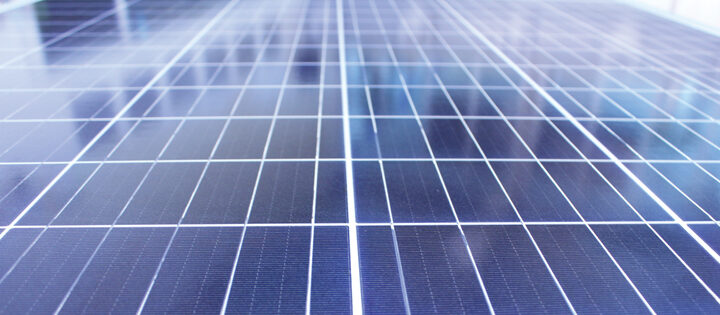New research from CSIRO tracks a decade of developments in silicon photovoltaics, and discusses the future of the industry.
A new research paper led by CSIRO postdoctoral researcher Dr Bruno Vicari Stefani analyses ten years of data on developments in the silicon solar photovoltaic (PV) industry and explores why some technologies struggled to gain a foothold in the market, while others exceeded expectations.
Published in Joule, a scientific journal focusing on sustainable energy, the paper Historical market projections and the future of silicon solar cells reports from the International Technology Roadmap for Photovoltaics (ITRPV) and concludes that many long-term predictions within the industry were inaccurate.
The International Renewable Energy Agency (IRENA) notes that the decade from 2010–2020 saw renewable power generation becoming the default economic choice for new energy generation capacity, and solar joining wind as a competitive option.
According to a 2023 research paper published in the IEEE Journal of Photovoltaics (Global Progress Toward Renewable Electricity: Tracking the Role of Solar) PV is now the most rapidly growing generation technology in the energy transition.
Marking a milestone year, PV represented 56 per cent of newly installed global electricity generating capacity in 2022. “Solar is a very fast-moving, dynamic industry,” Dr Vicari Stefani said. “Our research explores some of the discrepancies between what was projected in the industry, and what transpired in reality.”
A short history of silicon PV technologies
A solar panel is formed by connecting many individual solar cells. When sunlight hits the cell, the solar energy is absorbed, releasing an electron that flows to the metal contacts where it is collected. This produces an electrical current that is harnessed to provide power to the consumer’s home or business.
The following guide takes us through a summarised history of the solar cell evolution, leading us to the challenges of future technologies. For example, the biggest challenge with the next generation of cells is finding the best material that can be coupled with silicon to form a tandem. Despite promising performance from perovskite materials, stability in the field remains a challenge.
So far, perovskite-on-silicon tandem solar cells have shown to retain 80 per cent of their initial power after one year of operation in the field. In contrast, some silicon PV manufacturers provide warranted power outputs of over 88 per cent of the modules initial power after 40 years of operation.
Key conclusions from the paper
The ITRPV is a globally recognised annual report that takes a snapshot of the current PV industry landscape, and projects future trends.
“Data is collected annually from stakeholders across the solar PV supply chain to assess the current state of play in the industry and make some projections about what is going to happen in future,” Dr Vicari Stefani said.
“For our research paper, which was written in partnership with researchers from UNSW and the University of Oxford, we analysed ITRPV reports from 2012 to 2023, compiling their projections and comparing those with the actual estimated market figures.”
The analysis highlights some significant discrepancies between the historically projected market shares and the market shares that were eventually realised. Those discrepancies come in two forms. In some cases, the market share of a technology increased much more rapidly than expected.
This was the case with the adoption of the PERC solar cell design, due to the development of a thin passivation layer (a layer of material to reduce electrical recombination) that was rapidly translated from research and development to production, as well as the improvement and availability of PERC manufacturing tools. The ITRPV reports issued between 2013 and 2020 estimated that the market share of PERC would be limited to approximately 40–70 per cent.
In reality, the PERC market share increased from 35 per cent to more than 80 per cent between 2018 and 2021. In other cases, technologies that were projected to rapidly gain market share never took off. This is what happened with SHJ solar cell design and n-type silicon wafers. In both those examples, the analysis suggests that the lack of observed market gain was related to sustained success of PERC.
The analysis concludes that these discrepancies – in particular the potential for rapid transitions – reveal that business-as-usual evolution does not always apply in the photovoltaic industry, and that projections for future development must be approached with caution.
The paper’s co-author and postdoctoral research fellow at the University of Oxford, Dr Matthew Wright, said, “Not only is it possible for the roadmaps to be inaccurate, but we show that the causes underpinning these inaccuracies can vary widely, which makes the industry trends difficult to project.”
What might happen next in the fast-moving PV industry?
The first commercial tandem solar cell is still to be announced – despite optimistic predictions that this technology would enter the market in 2019. Notwithstanding its current durability challenges, further development on perovskite-on-silicon tandem solar cells may lead it to be the first commercial tandem PV technology.
In the meantime, the adoption of TOPCon technology is – for the moment – closely following the projections outlined in the ITRPV reports. These indicate a market share of up to 60 per cent in the next decade. However, Dr Vicari Stefani is keen to stress the need for caution when it comes to projecting future developments in the PV industry.
“Based on what we have seen during past transitions in the industry, it’s likely that TOPCon will experience an even more rapid uptake than predicted – as occurred with PERC – and will soon become the mainstream commercial PV technology,” Dr Vicari Stefani said.
